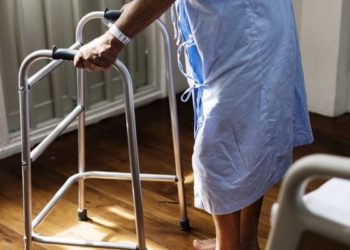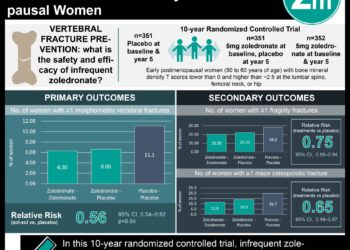Stimulant medication use amongst children and adolescents linked to lower bone mineral density
1. Based on a cross-sectional study, children and adolescents who reported using stimulant medications were found to have lower bone mineral density (BMD) as assessed by dual-energy x-ray absorptiometry (DXA) of the spine, total femur, and femoral neck measurements.
2. The association observed was linked to the use of stimulant medications for longer periods of time (>3 months) suggesting a dose-dependent relationship.
Evidence Rating Level: 3 (Average)
Study Rundown: Evidence from both murine and human studies highlight the importance of the nervous system in the development and maintenance of bone growth and remodeling. Increased sympathetic activity and beta-adrenergic activation (such as with beta-agonist medications) can lead to decreased bone mass. The use of stimulant medications (such as methylphenidate) has been the mainstay of therapy for children and adolescents with attention-deficit/hyperactivity disorder. Prior studies have suggested that these medications may diminish bone growth, and these children may be at risk of low bone mass and subsequent increased risk of fractures.
The current study used data from the National Health and Nutrition Examination Survey (NHANES), which examined children and adolescents from ages 8 to 20 years-old who had DXA scans for the assessment of bone mass. Stimulant use was based on self-reported questionnaires completed by participants (for age 16 years or older) or by their proxy (age less then 16 years). After correcting for known variables affecting bone health, those participants with reported stimulant use had lower bone mineral content at all anatomic sites examined. The association between stimulant use and lower bone mass was again shown for those with exposure time of 3 months or greater; but the association was lost for those with less than 3 months of use. The strength of the study was the large sample size and use of a well-validated questionnaire, however the cross-sectional nature of the study prohibited formation of any causal relationship. Additional studies would be need to identify the clinical relevance of the reduction in mineral bone content.
Click to read the study, published today in JAMA Pediatrics
Relevant Reading: Stimulant medication effects on growth and bone age in children with attention-deficit/hyperactivity disorder: a prospective cohort study
In-Depth [cross-sectional study]: This study examined data from the National Health and Nutrition Examination Survey (NHANES) from 2005 to 2010 and included participants from the age of 8 to 20 years old. Only patients with data on DXA results, anthropometric, demographic, and medication history were included. Stimulant use was self-reported for participants 16 or over, and reported by proxies for other ages. Stimulant users were defined as those using one of the following: amphetamine, methylphenidate, lisdexamfetamine dimesylate, dextroamphetamine sulfate, or levoamphetamine.
After adjusting for known bone health risk factors (demographics, socioeconomic status, ethnicity, etc), those with stimulant use had lower bone mineral content (BMC) of the lumbar spine (p = 0.02), and femoral neck (p = 0.03). Compared to those without stimulant use, those with use greater or equal to 3 months had lower BMC of the lumbar spine (p = 0.03) and femoral neck p = 0.05), but this association was not preserved for those with less than 3 months of use.
Image: CC/Wiki
©2016 2 Minute Medicine, Inc. All rights reserved. No works may be reproduced without expressed written consent from 2 Minute Medicine, Inc. Inquire about licensing here. No article should be construed as medical advice and is not intended as such by the authors or by 2 Minute Medicine, Inc.







